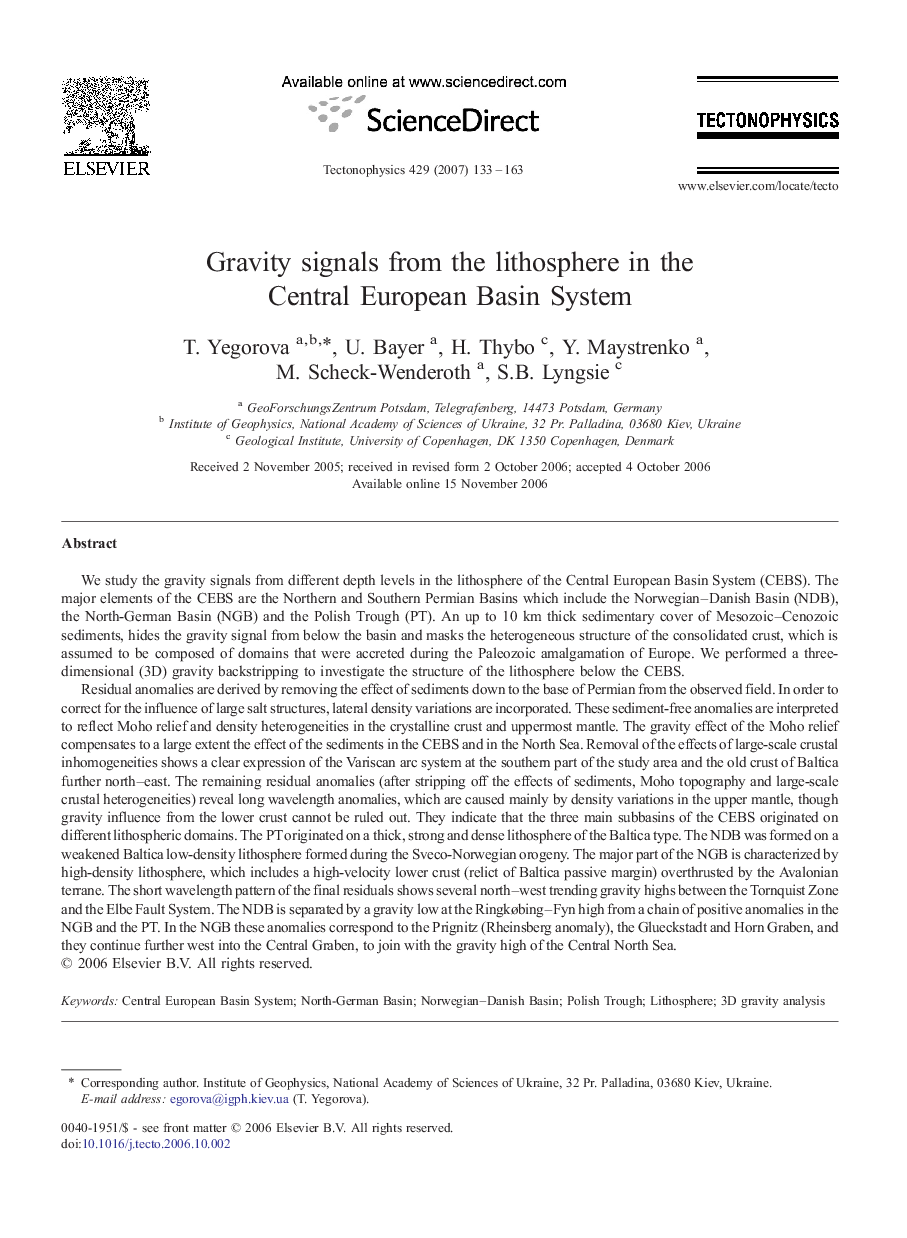| Article ID | Journal | Published Year | Pages | File Type |
|---|---|---|---|---|
| 4694998 | Tectonophysics | 2007 | 31 Pages |
We study the gravity signals from different depth levels in the lithosphere of the Central European Basin System (CEBS). The major elements of the CEBS are the Northern and Southern Permian Basins which include the Norwegian–Danish Basin (NDB), the North-German Basin (NGB) and the Polish Trough (PT). An up to 10 km thick sedimentary cover of Mesozoic–Cenozoic sediments, hides the gravity signal from below the basin and masks the heterogeneous structure of the consolidated crust, which is assumed to be composed of domains that were accreted during the Paleozoic amalgamation of Europe. We performed a three-dimensional (3D) gravity backstripping to investigate the structure of the lithosphere below the CEBS.Residual anomalies are derived by removing the effect of sediments down to the base of Permian from the observed field. In order to correct for the influence of large salt structures, lateral density variations are incorporated. These sediment-free anomalies are interpreted to reflect Moho relief and density heterogeneities in the crystalline crust and uppermost mantle. The gravity effect of the Moho relief compensates to a large extent the effect of the sediments in the CEBS and in the North Sea. Removal of the effects of large-scale crustal inhomogeneities shows a clear expression of the Variscan arc system at the southern part of the study area and the old crust of Baltica further north–east. The remaining residual anomalies (after stripping off the effects of sediments, Moho topography and large-scale crustal heterogeneities) reveal long wavelength anomalies, which are caused mainly by density variations in the upper mantle, though gravity influence from the lower crust cannot be ruled out. They indicate that the three main subbasins of the CEBS originated on different lithospheric domains. The PT originated on a thick, strong and dense lithosphere of the Baltica type. The NDB was formed on a weakened Baltica low-density lithosphere formed during the Sveco-Norwegian orogeny. The major part of the NGB is characterized by high-density lithosphere, which includes a high-velocity lower crust (relict of Baltica passive margin) overthrusted by the Avalonian terrane. The short wavelength pattern of the final residuals shows several north–west trending gravity highs between the Tornquist Zone and the Elbe Fault System. The NDB is separated by a gravity low at the Ringkøbing–Fyn high from a chain of positive anomalies in the NGB and the PT. In the NGB these anomalies correspond to the Prignitz (Rheinsberg anomaly), the Glueckstadt and Horn Graben, and they continue further west into the Central Graben, to join with the gravity high of the Central North Sea.
